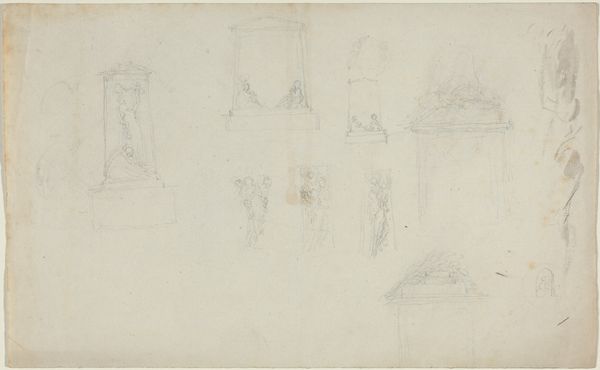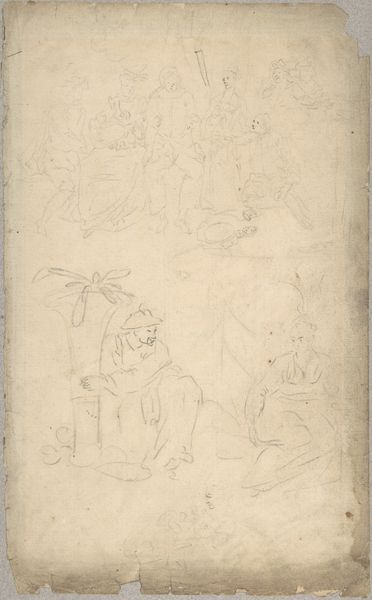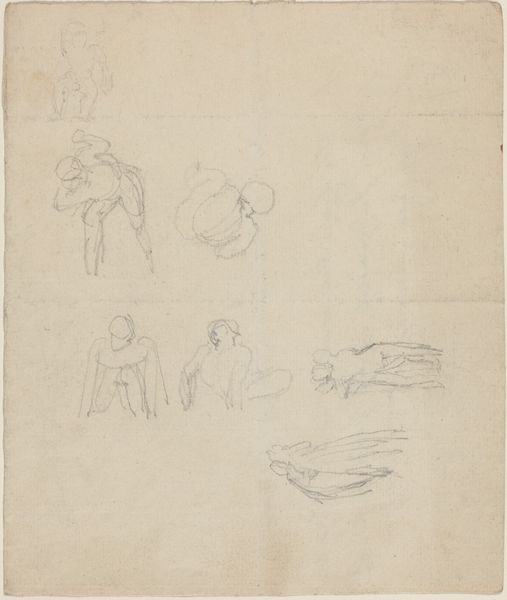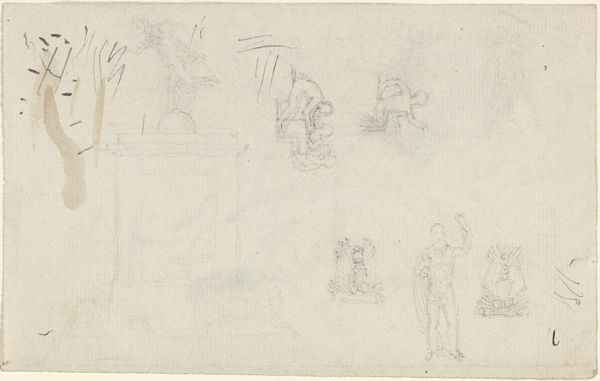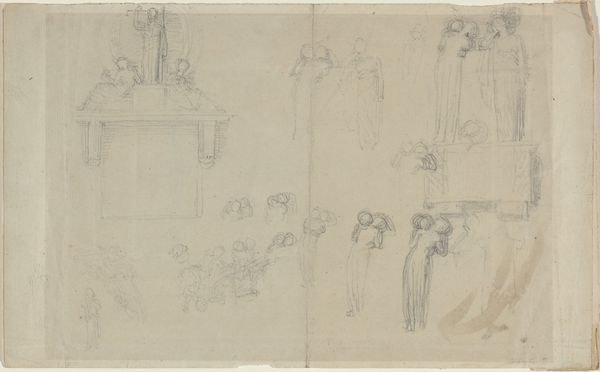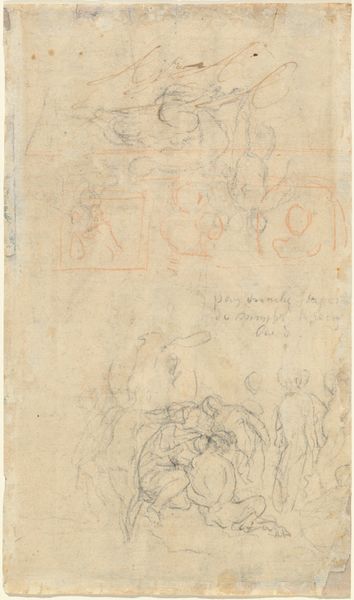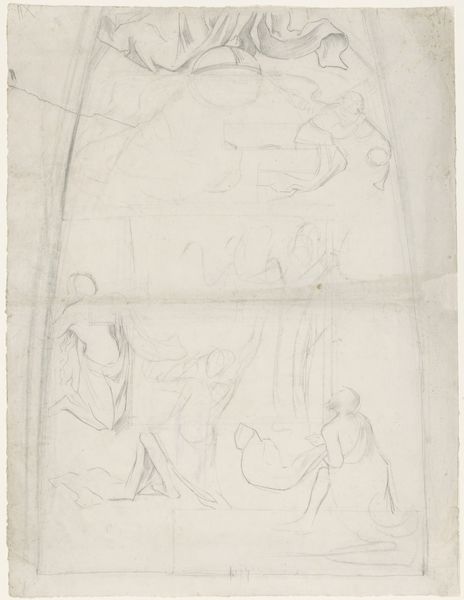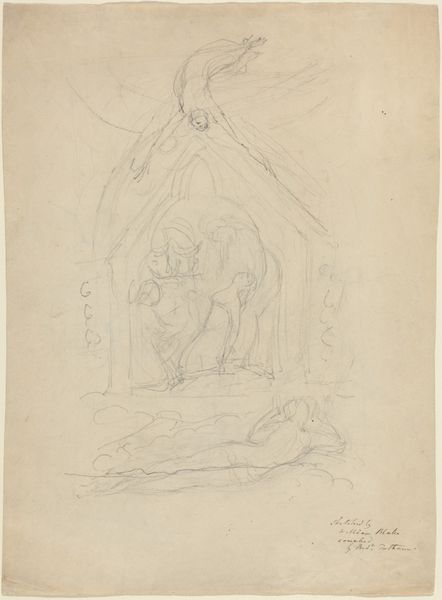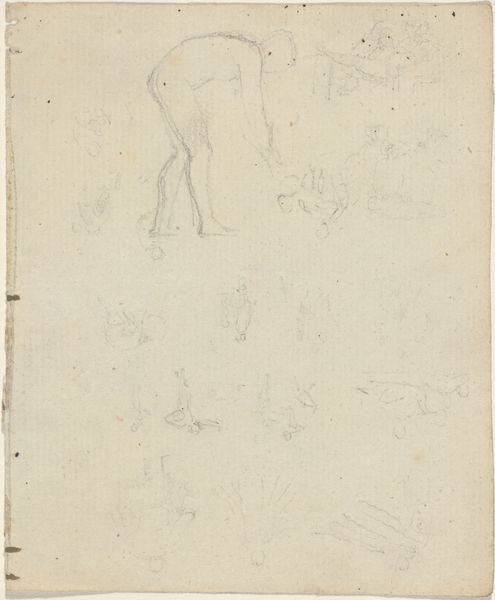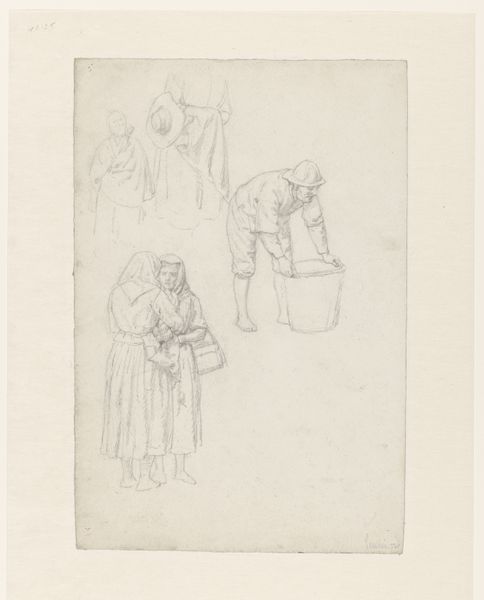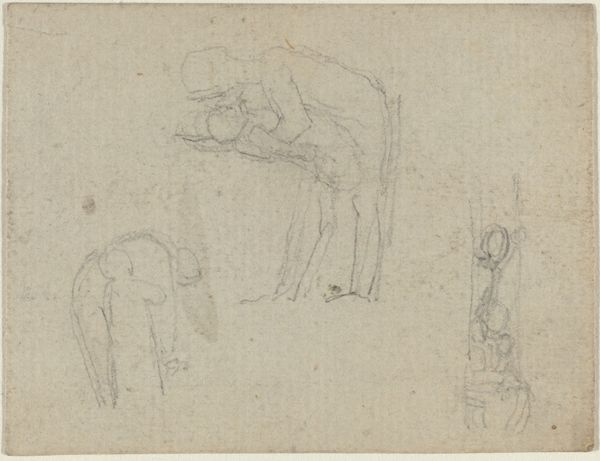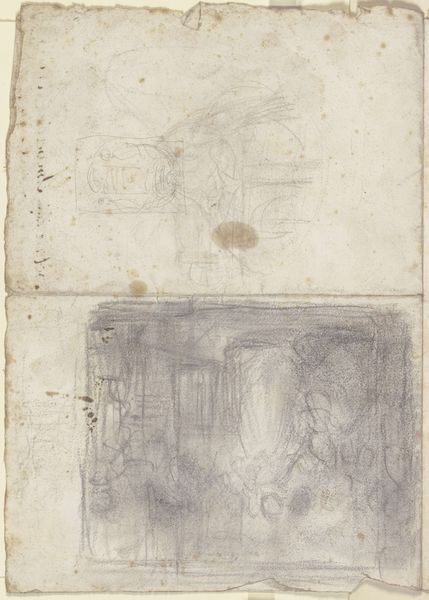![Sheet of Studies [recto and verso] by John Flaxman](/_next/image?url=https%3A%2F%2Fd2w8kbdekdi1gv.cloudfront.net%2FeyJidWNrZXQiOiAiYXJ0ZXJhLWltYWdlcy1idWNrZXQiLCAia2V5IjogImFydHdvcmtzLzg1YmJlNWRjLTdhZWUtNGQwOC1hNTE0LTVlODBjMTE3ZDY5Mi84NWJiZTVkYy03YWVlLTRkMDgtYTUxNC01ZTgwYzExN2Q2OTJfZnVsbC5qcGciLCAiZWRpdHMiOiB7InJlc2l6ZSI6IHsid2lkdGgiOiAxOTIwLCAiaGVpZ2h0IjogMTkyMCwgImZpdCI6ICJpbnNpZGUifX19&w=3840&q=75)
drawing, paper, pencil
#
drawing
#
figuration
#
paper
#
pencil
Dimensions: overall: 20 x 16.2 cm (7 7/8 x 6 3/8 in.)
Copyright: National Gallery of Art: CC0 1.0
Editor: This is "Sheet of Studies [recto and verso]" by John Flaxman. It’s a pencil drawing on paper, although we don’t know the exact date. I’m really drawn to how it feels like I'm looking at a peek into the artist’s mind with the figures sketched and overlaid across the page. How do you interpret this work? Curator: Well, looking at it through a historical lens, Flaxman was working at a time when the concept of the "artist's genius" was really taking hold, influencing ideas about artistic creation and display. We see the residue of Neoclassical influence but these types of preliminary drawings give the viewer insight into the messy work behind these grand academic traditions. The display of a sketch like this helps construct the idea of artistic "inspiration" which feeds into the market and value we assign to artworks. Why do you think the museum chose to display this sketch as opposed to the finished work that may have resulted from it? Editor: That’s fascinating! I suppose displaying a sketch gives it that raw, creative edge that we appreciate. So, the museum is shaping how we see the artistic process by choosing to show this preparatory drawing. Is that intentional do you think? Curator: Museums, even inadvertently, always participate in constructing these narratives around artists and artistic movements. Think about how displaying sketches like these democratizes art. They make art seem less intimidating because you see it in its nascent form, approachable. It humanizes the artist, right? Editor: Absolutely. I hadn't thought about that angle. I see now how much context the institution brings. Curator: Precisely! And it highlights the role of institutions like this museum in shaping not only artistic production but also public perception of what art *is*. It’s not just about aesthetics. It is also about art's public role. Editor: This has given me so much to think about. Thanks for illuminating the museum’s role in how we view even a simple sketch. Curator: My pleasure. Keep looking beneath the surface!
Comments
No comments
Be the first to comment and join the conversation on the ultimate creative platform.
